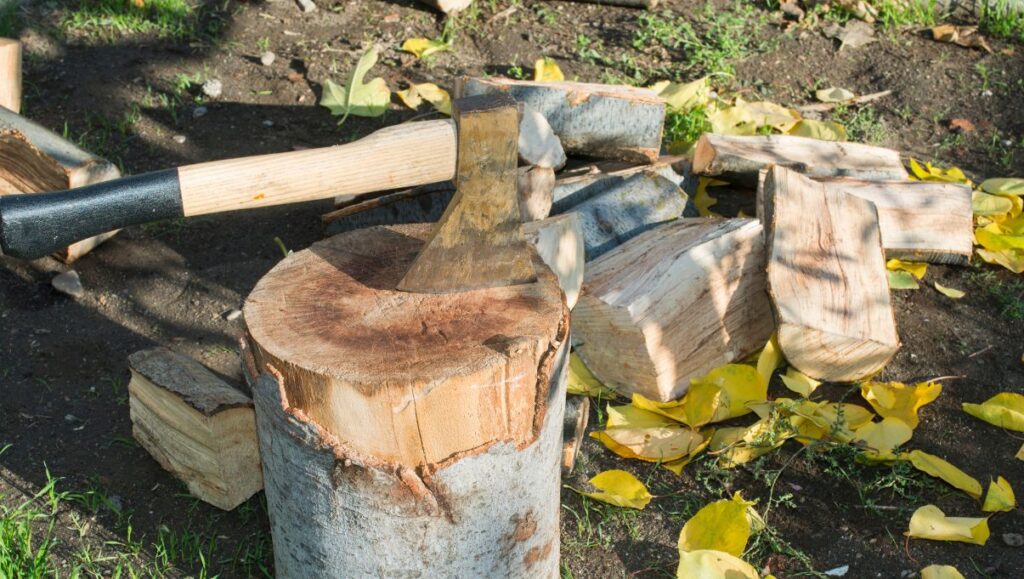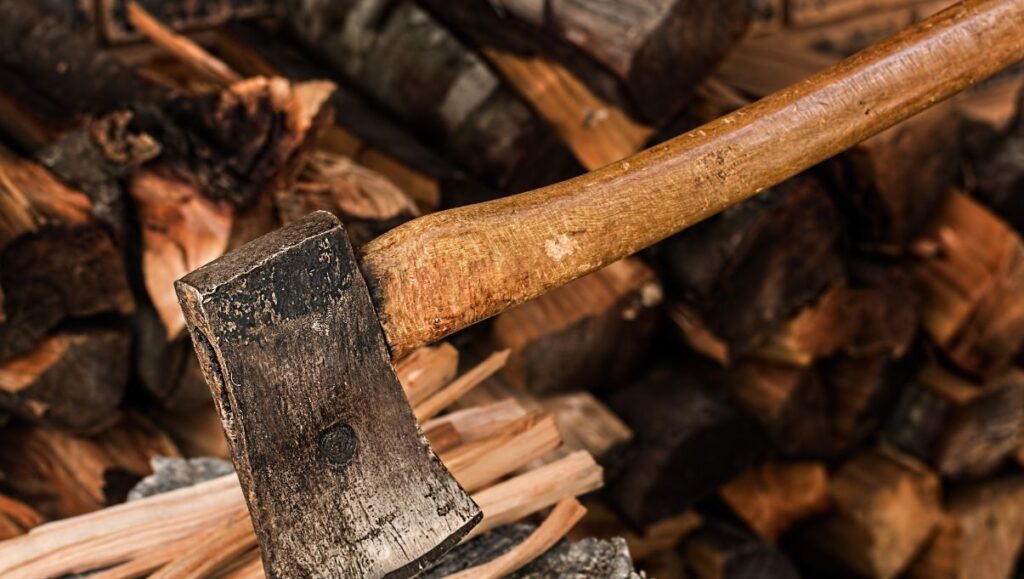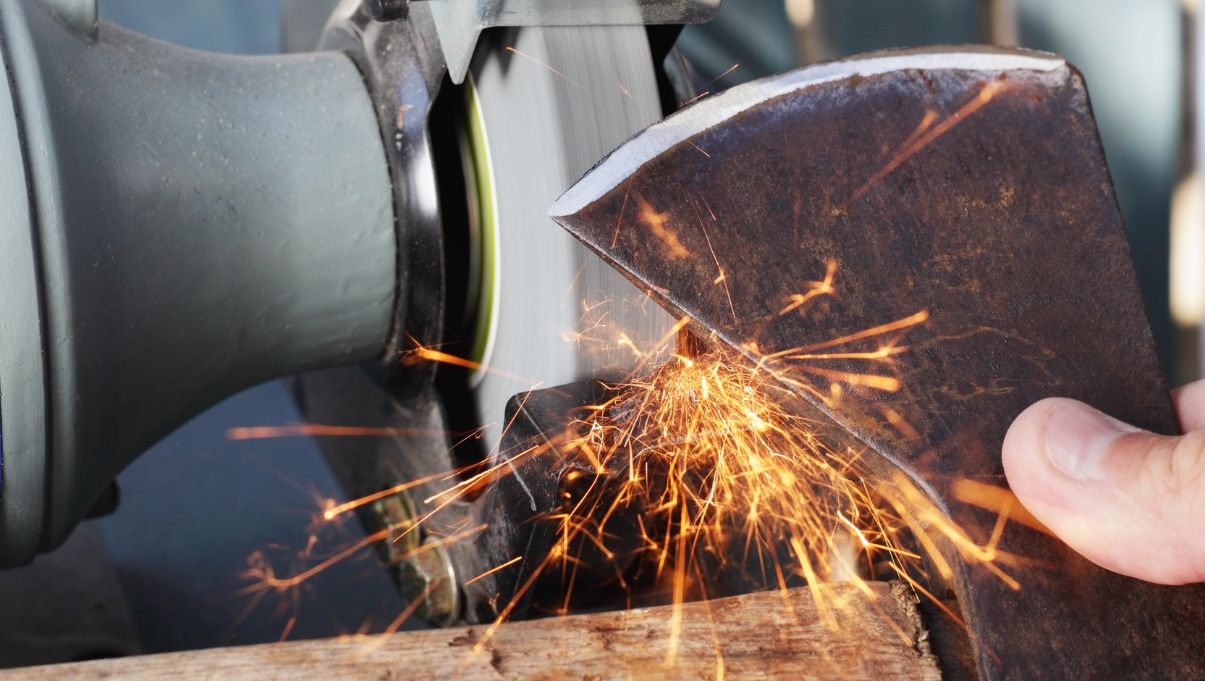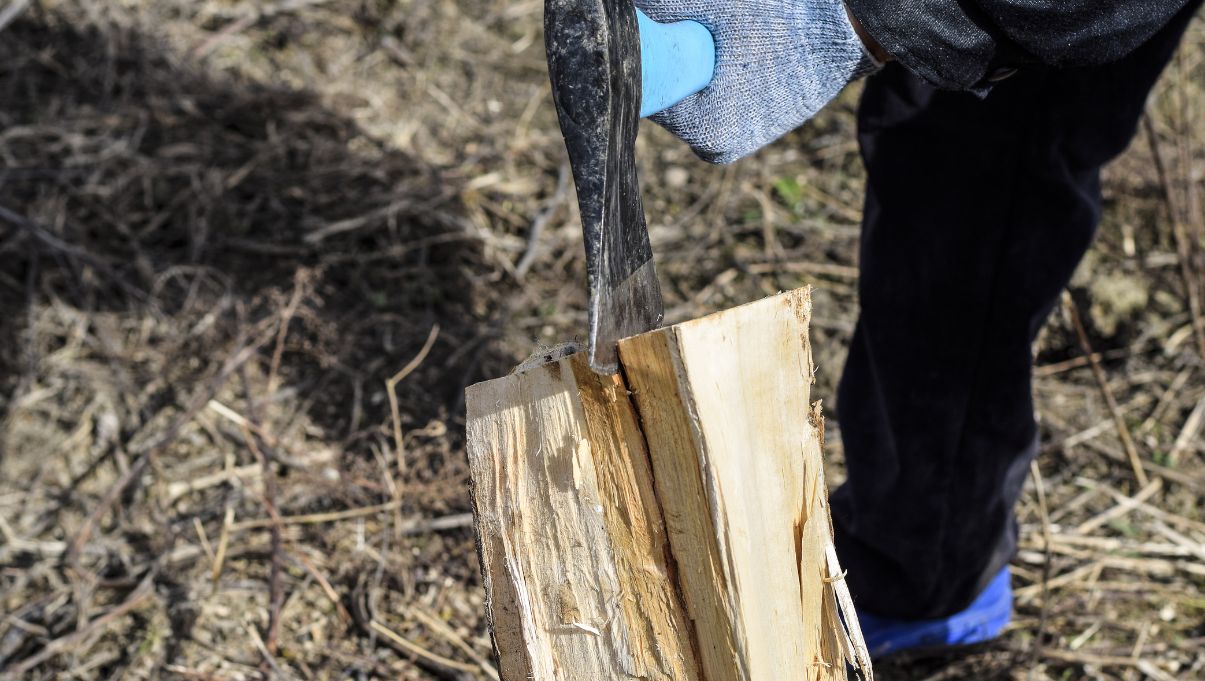Introduction
Axes are essential tools for various outdoor and woodworking tasks. When it comes to wood-related activities, choosing the right type of axe is crucial. In this article, we will explore the differences between a splitting axe and a chopping axe. While both are designed for cutting wood, they have distinct features that make them suitable for different tasks. Understanding these differences will help you select the appropriate axe for splitting logs or chopping tasks, ensuring efficient and effective results.
What is an Axe?
An axe is a versatile cutting tool that consists of a sharp blade, called the head, attached to a handle. Axes are commonly used for chopping, felling trees, splitting wood, and other outdoor tasks. They come in different sizes and designs, with variations in head shape, handle length, and weight. Axes are known for their versatility, allowing users to perform a wide range of cutting and chopping tasks.
What is a Chopping Axe?
A chopping axe, as the name suggests, is specifically designed for chopping tasks. It features a sharp, narrow blade that is ideal for cutting through wood fibers efficiently. The weight distribution of a chopping axe is typically centered on the head, allowing for better control and precision during chopping motions. Chopping axes are commonly used for tasks such as felling trees, chopping logs into smaller pieces, and processing firewood.
What is a Splitting Axe?
A splitting axe, on the other hand, is designed for splitting wood along the grain. It features a broader, wedge-shaped head that helps to efficiently split logs apart. The weight distribution of a splitting axe is concentrated towards the head, providing more force upon impact and enabling the wood to split easily. Splitting axes are specifically engineered for tasks like splitting firewood, preparing kindling, and processing logs for construction purposes.

Splitting Axe vs ChoppingAxe: Comparison
Head Design:
Chopping Axe: A chopping axe typically has a narrow, wedge-shaped head. This design allows the blade to penetrate the wood more easily and efficiently, making it ideal for chopping tasks that require clean cuts.
Splitting Axe: A splitting axe features a broader, wedge-shaped head. The wider profile helps to push apart the wood fibers, facilitating the splitting process by exerting force along the grain.
Weight:
Chopping Axe: Chopping axes are generally lighter compared to splitting axes. The lighter weight allows for better maneuverability and control, making them suitable for tasks that require accuracy and precision.
Splitting Axe: Splitting axes are heavier to generate more force upon impact. The additional weight, concentrated towards the head, provides the necessary momentum to split logs efficiently.
Handle Length:
Chopping Axe: Chopping axes often have shorter handles, providing better control and maneuverability. The shorter handle length allows for one-handed use and facilitates precise chopping motions.
Splitting Axe: Splitting axes typically have longer handles, providing increased leverage and power. The longer handle allows for two-handed use, enabling users to generate more force and apply it effectively for splitting tasks.
Versatility:
Chopping Axe: Chopping axes are versatile tools suitable for a range of cutting tasks. They can be used for felling trees, chopping logs into smaller pieces, and processing firewood.
Splitting Axe: Splitting axes are specialized tools designed specifically for splitting wood. They excel in tasks like splitting firewood, preparing kindling, and processing logs for construction.

Wood Fiber Direction:
Chopping Axe: Chopping axes are designed to cut across the wood fibers, making them efficient for tasks like felling trees and chopping logs into smaller pieces.
Splitting Axe: Splitting axes are designed to split wood along the grain, making them more effective for tasks that require splitting logs and preparing firewood.
FAQs
Which axe is better for felling trees?
When it comes to felling trees, a chopping axe is typically the preferred tool. Its narrower blade and lighter weight allow for better control and accuracy during the cutting process. Chopping axes are designed to make clean cuts across wood fibers, making them more effective for felling tasks.
Which axe is safer to use: splitting or chopping?
Both splitting and chopping axes require proper handling and caution to ensure safe usage. However, splitting axes may pose a slightly higher risk due to their broader heads and heavier weight. The additional force exerted by a splitting axe increases the chances of accidents if not used with care. It’s important to follow safety guidelines, such as wearing appropriate protective gear and using proper chopping or splitting techniques, regardless of the type of axe being used.
Can I use a splitting axe for tasks other than splitting wood?
While splitting axes are specifically designed for splitting wood, they can be used for certain related tasks. For example, a splitting axe can be used for driving wedges or processing logs for construction projects. However, they may not be as versatile as chopping axes, which are better suited for a wider range of cutting and chopping tasks.
Can I interchangeably use a splitting axe and a chopping axe?
While there may be some overlap in their functionality, splitting axes and chopping axes are designed for specific tasks. It is generally recommended to use the appropriate tool for the intended task to ensure optimal results. Interchanging the axes may result in less efficiency or effectiveness, depending on the specific task at hand.
Conclusion
In conclusion, choosing the right axe for the task at hand is essential for achieving efficient and effective results. While both splitting axes and chopping axes are designed for wood-related activities, they have distinct features that make them suitable for different tasks.
Chopping axes are ideal for tasks that require clean cuts and precise chopping motions, such as felling trees and processing firewood. Splitting axes, with their broader heads and heavier weight, excel in splitting wood along the grain, making them more efficient for tasks like splitting firewood and preparing logs for construction.
By understanding the differences between these two types of axes, you can select the appropriate tool for your specific chopping or splitting needs, ensuring successful wood-processing endeavors.



